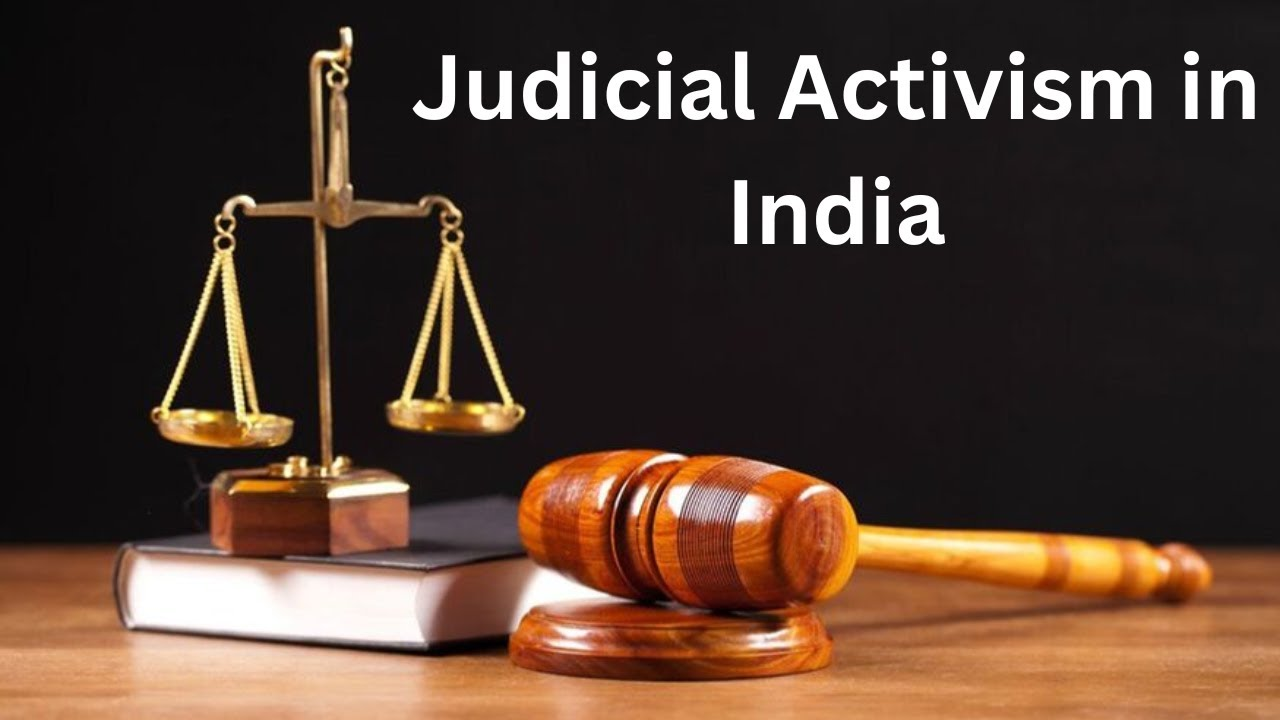
Environmental challenges in India have often outpaced legislative and administrative measures. In this vacuum, the Supreme Court of India has played a pivotal role through judicial activism, stepping in to protect natural resources and citizens’ right to a healthy environment. By interpreting Article 21 of the Constitution (Right to Life) broadly, the Court has transformed environmental protection into a fundamental right and laid down guiding principles for governance.
Role of Judicial Activism in Environmental Protection
Judicial activism refers to the proactive role taken by the judiciary to enforce rights and expand the scope of justice beyond traditional interpretation. In the context of environmental law, this has meant:
- Expanding the Right to Life to include the right to clean air, water, and environment.
- Establishing doctrines such as Polluter Pays, Precautionary Principle, and Public Trust Doctrine.
- Using Public Interest Litigations (PILs) as a tool to involve citizens and NGOs in environmental justice.
- Holding governments and industries accountable for ecological degradation.
Landmark Supreme Court Cases in Environmental Judicial Activism
1. Rural Litigation and Entitlement Kendra vs. State of Uttar Pradesh (1985)
- Issue: Unregulated limestone quarrying in Mussoorie hills caused ecological imbalance.
- Judgment: Court ordered closure of quarries despite economic concerns, prioritizing ecological security.
- Significance: Introduced Sustainable Development into Indian jurisprudence.
2. M.C. Mehta vs. Union of India (Oleum Gas Leak Case, 1986)
- Issue: Gas leakage from Shriram Industries in Delhi endangered public health.
- Judgment: Established the doctrine of Absolute Liability, making hazardous industries fully liable for harm caused.
- Significance: Strengthened industrial accountability for environmental disasters.
3. Subhash Kumar vs. State of Bihar (1991)
- Issue: Industrial discharge polluted the Bokaro River, threatening drinking water.
- Judgment: Declared that the Right to Pollution-Free Water and Air is part of the Right to Life under Article 21.
- Significance: Gave constitutional recognition to environmental rights.
4. Vellore Citizens’ Welfare Forum vs. Union of India (1996)
- Issue: Tanneries in Tamil Nadu polluted rivers and agricultural land.
- Judgment: Reinforced the Precautionary Principle and Polluter Pays Principle.
- Significance: Integrated global environmental principles into Indian law.
5. Indian Council for Enviro-Legal Action vs. Union of India (1996)
- Issue: Chemical industries in Rajasthan discharged untreated waste, contaminating soil and groundwater.
- Judgment: Directed industries to compensate affected villagers and restore the environment.
- Significance: Strengthened liability and compensation mechanisms.
6. M.C. Mehta vs. Kamal Nath (1997)
- Issue: Diversion of Beas River by a motel for commercial purposes.
- Judgment: Applied the Public Trust Doctrine, holding the state responsible for protecting natural resources.
- Significance: Prevented misuse of rivers and forests for private gain.
7. T.N. Godavarman Thirumulpad vs. Union of India (1996 onwards)
- Issue: Large-scale deforestation across the country.
- Judgment: Expanded the definition of “forest,” imposed a ban on tree felling without approval, and set up monitoring committees.
- Significance: Revolutionized forest conservation in India.
Doctrines Established Through Judicial Activism
- Absolute Liability – Industries must bear full responsibility for accidents from hazardous activities.
- Polluter Pays Principle – Polluters must bear the cost of damage and restoration.
- Precautionary Principle – Preventive steps must be taken even in the absence of full scientific certainty.
- Sustainable Development – Development must balance ecological and economic needs.
- Public Trust Doctrine – Natural resources are held by the state in trust for the people.
Challenges in Judicial Activism
While the judiciary has been a strong pillar of environmental governance, challenges remain:
- Overreach Concerns: Courts sometimes face criticism for stepping into executive functions.
- Implementation Issues: Many orders remain unenforced due to weak institutions.
- Balancing Growth and Ecology: Striking equilibrium between economic development and environmental conservation is complex.
Overview Table
| Case & Year | Issue Addressed | Principle/Doctrine Established | Impact on Governance |
|---|---|---|---|
| RLEK vs. State of UP (1985) | Quarrying in Dehradun | Sustainable Development | Prioritized ecology over economy |
| Oleum Gas Leak (1986) – M.C. Mehta | Industrial disaster | Absolute Liability | Strengthened industrial safety |
| Subhash Kumar (1991) | River pollution in Bihar | Right to Clean Environment | Expanded Article 21 rights |
| Vellore Citizens Forum (1996) | Tanneries pollution | Precautionary & Polluter Pays | Integrated global principles |
| Enviro-Legal Action (1996) | Chemical waste in Rajasthan | Polluter Pays Principle | Compensation & accountability |
| M.C. Mehta vs. Kamal Nath (1997) | Diversion of Beas River | Public Trust Doctrine | Protected natural resources |
| T.N. Godavarman (1996 onwards) | Deforestation | Expanded Forest Definition | Landmark in forest conservation |
FAQs
Q1. How has the Supreme Court expanded Article 21 in environmental cases?
By recognizing the right to clean air, water, and environment as part of the fundamental right to life.
Q2. Which case introduced the principle of Absolute Liability in India?
The M.C. Mehta Oleum Gas Leak Case (1986) established the doctrine of Absolute Liability.
Q3. What is the role of the Public Trust Doctrine in environmental protection?
It ensures that the state holds natural resources like rivers and forests in trust for citizens and cannot allow their misuse.

